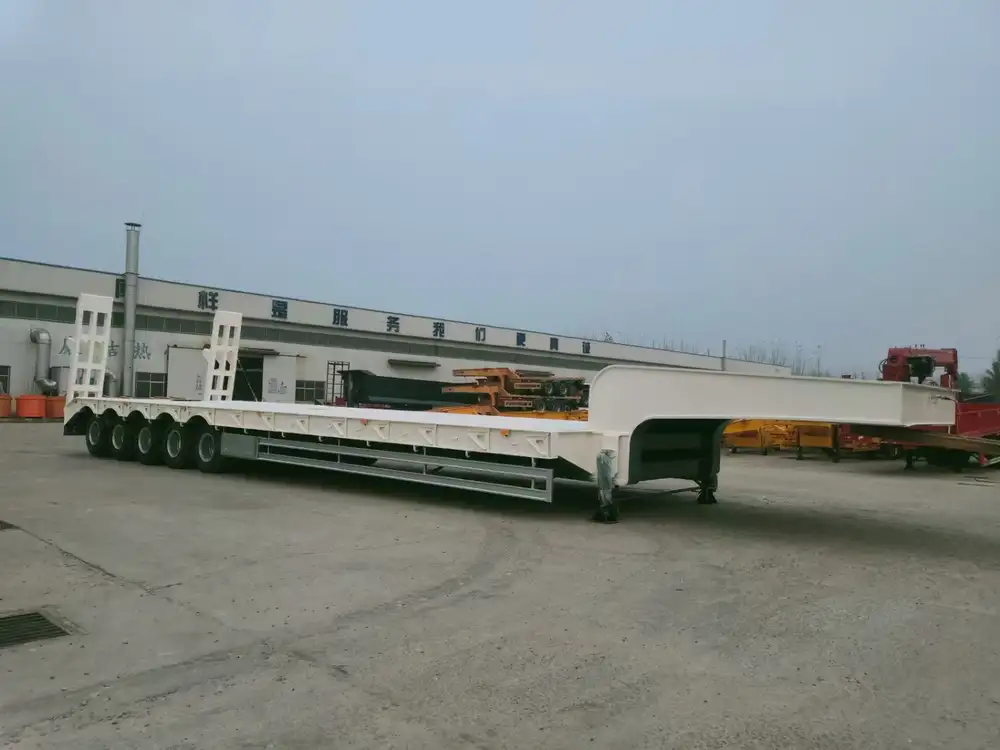Introduction to Grey Water Tanks in Food Trailers
In the world of food trailers, operational efficiency and compliance with health and safety regulations are paramount. Among the essential components of a food trailer, grey water tanks play a crucial role. These tanks are designed to collect and manage wastewater generated from sinks, dishwashers, and other kitchen appliances. Understanding how large your grey water tank needs to be is vital for the smooth operation of your food trailer, ensuring you stay compliant and provide quality service.
The Significance of Grey Water Tanks
Grey water tanks serve multiple purposes that go beyond mere compliance with health regulations. Proper management of grey water contributes to:
- Environmental sustainability: Efficient waste disposal minimizes environmental impact.
- Operational efficiency: A well-sized grey water tank can help avoid disruptions during service.
- Customer satisfaction: A clean working environment enables food trailers to offer high-quality products.
When assessing the size of a grey water tank for your food trailer, several factors come into play.

Factors Influencing Grey Water Tank Size
Determining the appropriate size for your grey water tank requires careful consideration of various elements:
1. Daily Water Usage
The first step in calculating your grey water tank size involves estimating your daily water usage. This can include:
- Sinks: How many sinks are installed in your food trailer?
- Food Preparation: Do you have a dishwasher or run multiple sinks simultaneously?
- Cleaning Requirements: How often do you need to wash dishes or clean surfaces?
Example Calculation
| Source | Estimated Daily Usage (gallons) |
|---|---|
| Hand sink | 10-15 |
| Dishwashing sink | 20-30 |
| Food prep sink | 15-25 |
| Total Daily Usage | 45-70 |
From the above table, if your food trailer has multiple sinks, an estimated total daily usage could range from 45 to 70 gallons.

2. Service Duration
How long do you typically serve during peak hours? The duration of service directly influences how quickly grey water accumulates. A trailer serving multiple events may require a larger tank due to increased usage.
3. Event Type and Volume
If your food trailer operates primarily at festivals or large public gatherings, the volume of customers can spike dramatically. Anticipating this variability in service helps in making informed decisions about tank size.
4. Local Regulations and Requirements
Many jurisdictions have specific requirements regarding grey water management. These regulations might stipulate minimum tank sizes based on capacity and user activity, modifying your calculations accordingly.

Recommended Grey Water Tank Sizes
While calculations can yield different results based on unique operating conditions, we can provide some general guidelines for sizing grey water tanks in food trailers:
| Capacity (gallons) | Estimated Usage (people served) | Application |
|---|---|---|
| 20 | Up to 50 people | Small trailers, minimal usage |
| 30 | Up to 100 people | Medium operations |
| 60 | Up to 200 people | High-volume events |
| 100+ | More than 200 people | Large festivals or busy events |
Importance of Compliance
Investing in an appropriately sized grey water tank is not just a recommendation; it’s often a legal requirement. Penalties for non-compliance can be severe. Consider this as an integral part of your business plan.
Installation Considerations

Proper Placement
The placement of the grey water tank within your food trailer is critical. Below are a few factors to consider:
- Accessibility: Make sure it’s easy to access for maintenance and disposal.
- Weight Distribution: Proper weight distribution will help with trailer stability.
- Connection to Sinks: Ensure pipes are properly aligned and adhere to plumbing codes.
Quality Materials
Utilize high-quality, food-grade materials for your tanks. This choice not only prolongs the lifespan of the tank but also ensures that it remains safe and hygienic.
Maintenance Practices

Regular Inspections
Inspect your grey water tank regularly for signs of leaks or damage. Crevices can harbor bacteria and odors if not maintained.
Cleaning Routines
Develop a cleaning routine to address any build-up. The use of safe cleaning products will maintain a hygienic environment.
Professional Support
Consider hiring professionals for deeper maintenance issues or replacements.

Addressing Common Concerns
Odor Control
Odors associated with grey water can be a concern. Implementing the following strategies can mitigate unpleasant smells:
- Sealing Connections: Ensure all connections are sealed and tight to prevent leaks.
- Ventilation: Incorporate ventilation systems to allow airflow.
- Enzymatic Treatments: Use enzymatic solutions to break down waste and reduce odors.
Tank Overflow
Overflow situations can disrupt operations and cause health risks. To prevent these incidents:
- Regular Monitoring: Monitor grey water levels through viewing ports or monitors.
- Automatic Shutoff Systems: Implement alarm systems to alert staff before tank overflows occur.

Disposal Protocols
Knowing where to dispose of grey water is crucial. Many areas have designated facilities for proper disposal. Be sure to comply with local regulations regarding grey water discharge.
Conclusion: The Path to Optimal Waste Management
In summary, a well-thought-out approach to sizing and managing grey water tanks is essential for the successful operation of a food trailer. By considering factors such as daily water use, service duration, event volume, and environmental impact, we can design a system that meets our needs while ensuring compliance with pertinent regulations.
Key Takeaways
- An adequately sized grey water tank can enhance operational efficiency and compliance.
- Regular maintenance and proper disposal protocols ensure sustainable operations.
- A focus on customer needs and environmental impacts leads to better service and satisfaction.
By prioritizing these elements, food trailer operators can streamline their operations and provide exceptional service while adhering to health and safety mandates. The right grey water tank is not just an accessory—it’s a fundamental aspect of your business’s backbone.



